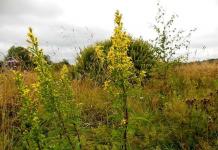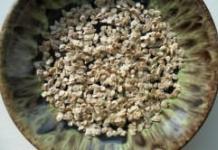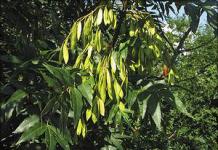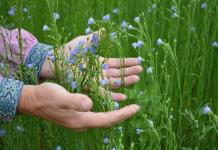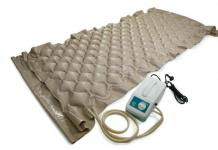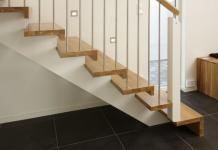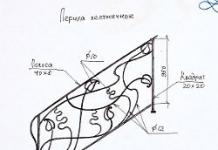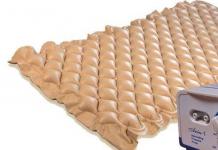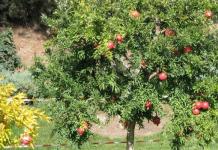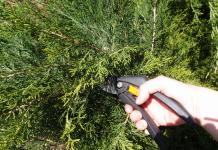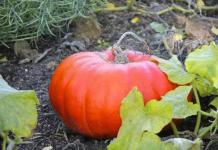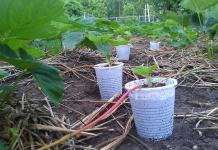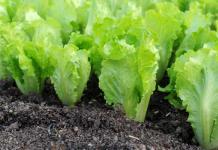Rdest. Perennial aquatic plant. In the ground, it develops a long rhizome. It overwinters, and in the spring, elongated shoots grow from wintering buds. Separate shoots or parts of them can come off and float freely in the water, continuing their development.
Aquatic mollusks, insects, and fish feed on pondweed. In thickets of pondweeds, many fish spawn. Dead shoots fall to the bottom. As they decompose, they turn into fertile sludge.
Ponds are distinguished by an exceptional variety of leaf patterns - from oval to ribbon-shaped. At the base of the leaf, transparent membranous stipules stick out or fused with the petiole.
The plant blooms in the air, exposing spike-shaped marsh-colored inflorescences above the water in July-August. Many species are hidden under the water surface of reservoirs.
The pond is floating. It is the most prominent type of plant due to its floating leaves. The leaves are shiny, like varnished, floating on the surface, oval in shape. Underwater leaves are not preserved by the time of flowering. When the reservoir dries up, it continues to live in a terrestrial form with leathery, heart-shaped leaves on petioles. A typical plant of lakes, ponds, rivers. Prefers slow flowing water. It has a greenish spike-shaped inflorescence, towering above the water; blooms in June-August.
All pondweeds grow well in fertile, organic-rich soil. The preferred depth of immersion is different: if pondweeds with floating leaves can grow in very shallow water, then submerged ones need at least 20-30 cm to settle down “comfortably”. Almost everyone can live in both still and slow-flowing water, but pectinate pondweed grows well in fast-moving stream water. The cuttings are planted in a container with fertile soil or drowned with a load at a suitable depth of a natural reservoir. Grows in both sun and partial shade.
They limit the spread, but it is almost impossible to destroy the accustomed pondweed. Ponds overwinter at the bottom of water bodies and do not need shelter or other measures for winter storage.
Propagated by cuttings in spring and summer, segments of rhizomes, as well as seeds. Seeds are collected at the end of August, when they separate from the plant and float on the surface of the water. Seeds are rolled into lumps of clay and lowered in the right places into a pond on muddy soil to a depth of 40-90 cm (for comb and brilliant pondweeds - to a depth of 1.5 m).
Use different types of pondweed for different water bodies, depending on the size.
Pond is valued mainly because of its leaves, which look beautiful both in the water column and on its surface. Graceful spicate inflorescences also give the plant an original look. In addition, the pond actively enriches the water with oxygen, is a refuge for various aquatic animals and fish, as well as an excellent food for waterfowl. Can grow in both large and small ponds. It blends well with most aquatic and coastal plants.
Separate shoots or parts of them can come off and float freely in the water, continuing their development. Aquatic mollusks, insects, and fish feed on pondweed. In thickets of pondweeds, many fish spawn. Dead shoots fall to the bottom. As they decompose, they turn into fertile sludge.
Ponds represent an exceptional variety of leaf patterns - from oval to ribbon-shaped. At the base of the leaf, transparent membranous stipules stick out or fused with the petiole. They bloom in the air, exposing spike-shaped marsh-colored inflorescences of unsightly flowers above the water in July - August. Many species are hidden under the water surface of Russian reservoirs.
 Pod floating- Potamogeton natans Pod floating- Potamogeton natans The most noticeable pondweeds with floating leaves. One is called R. floating (P. natans) with shiny, lacquered, oval-shaped leaves floating on the surface. Underwater leaves are not preserved by the time of flowering. When the reservoir dries up, it continues to live in a terrestrial form with leathery, heart-shaped leaves on petioles. A common plant of lakes, ponds, rivers. Prefers slow flowing water. The spike-shaped inflorescence is greenish, rises above the water, blooms in June-August. R. alpine(P. alpinus), with reddish floating leaves and a simple stem, retains, just in case, narrow underwater leaves up to 25 cm long. At R. cereal(P. gramineus) underwater leaves on a branched stem do not exceed 8 cm. Very variable appearance: when deepened, it can completely lose floating leaves, and when the reservoir dries up, it takes on a terrestrial form with leathery leaves narrowed into petioles. Photo EDSR. |
Ponds with submerged leaves:
Location: all pondweeds grow well in fertile, organic-rich soil. The preferred depth of immersion is different: if pondweeds with floating leaves can grow in very shallow water, then submerged ones need at least 20-30 cm to settle down “comfortably”. Almost everyone can live in both stagnant and slowly flowing water, but r. pectinate grows well in fast water streams. The cuttings are planted in a container with fertile soil or drowned with a load at a suitable depth of a natural reservoir. Grows in both sun and partial shade.
Care: limit distribution, but it is almost impossible to eliminate the accustomed pondweed. Ponds overwinter at the bottom of water bodies and do not need shelter or other measures for winter storage.
Reproduction: cuttings in spring and summer, cuts of rhizomes, as well as seeds. Seeds are collected at the end of the season, when they separate from the plant and float on the surface of the water. Seeds are rolled into lumps of clay and lowered in the right places into a pond on muddy soil, to a depth of 40-90 cm (for comb and brilliant pondweeds - to a depth of 1.5 m).
Usage: for different reservoirs depending on the size. For streams suitable r.brilliant, r.comb, r.pierced-leaved.
The pondweed is valued mainly because of its leaves, which look beautiful both in the water column and on the surface. Graceful spicate inflorescences also give the plant an original look. In addition, the pond actively enriches the water with oxygen, is a refuge for various aquatic animals and fish, and is an excellent food for waterfowl. Can be grown in both large and small ponds and blends well with most aquatic and coastal plants.
Floating pondweed (from lat. Potamogeton natans) is an aquatic plant, a representative of the pondweed family, perennial. Also known as naplava, water cabbage, floating zholga, floating tolga. The Latin name is derived from 2 words - "water" and "neighbor", and indicates the habitat of the plant.
The stalk is hollow inside, round or cylindrical, slightly branched. Height 60 - 150 cm. The leaves are underwater and floating, near the roots they are lanceolate, narrow-linear, on petioles up to half a meter long. Floating leaves are oval, pointed at the ends, dense, leathery, brown-green, arcuate veins. Underwater leaves are destroyed by the flowering period. The flowering part is able to rise above the water level by 15 cm. The flowers are pale green in color, rather inconspicuous in appearance, bisexual, without perianth. Inflorescences spike-shaped, cylindrical. The fruits are nut-shaped, on the water they spread over long distances, due to the fact that they do not sink for a long time. Seeds - without endosperm, completely absorbed by the embryo. The rhizome is creeping, by autumn it forms tuberous extensions rich in starch.
Flowering period - June, July. Fruit ripening - July, August. Propagated by seeds and vegetatively quite quickly, in shallow water it often completely fills the surface of a small pond.
Habitat - fresh and slightly saline water bodies with very slowly flowing or stagnant water. It develops by attaching its roots to the bottom, it produces long shoots stretching to the surface of the water. Capable of growing in low ambient temperatures with very little daylight.
Distributed in the Northern Hemisphere, in the waters of Siberia and the Far East, in central Russia, in the CIS countries, Scandinavia, Western Europe, the Balkan Peninsula, North America, Minor, Central and Central Asia, Turkish Armenia, Iran, Mongolia, China, Japan, North Africa.
Habitat - near the coast and calm streams, lake ponds.
Procurement and storage of raw pondweed floating
Grass and leaves can be harvested all summer (June to August). Rinse the raw materials well, dry in the shade. Store in a dark place.
Application in everyday life
The floating pond is food for aquatic mollusks, many insects, waterfowl and fish. Dead shoots at the bottom of reservoirs undergo decomposition, contributing to the formation of fertile silt.
The plant part is used as feed for pigs and as fertilizer in agriculture for fields.
In the fishery, in the thickets of this plant, fish, mollusks, amphibians spawn
Formations on the rhizome of a plant similar to tubers contain starch, they are suitable for human consumption.
The composition and medicinal properties of pondweed
Floating pondweed contains:
- carotenoid - rhodoxanthin,
- tannins (0.9%) - enveloping and bactericidal action
- ascorbic acid (in leaves - 49.8 mg%) - strengthens the immune system, the wall of blood vessels
- complex aromatic substances - hemostatic and anti-inflammatory effect
- seven types of flavonoids (orientin, homoorientin, scoparin, isoscoparin, luteolin 7-glucuronide, chrysoeriol 7-glucuronide) - influence on enzyme activity
- alkaloids are isolated in the seeds.
The use of pondweed floating in folk medicine
For therapeutic purposes, all parts of the plant are used as an anti-inflammatory, sedative.
Infusions and decoctions from the leaves and stems of the plant are taken orally for disorders of the digestive system, colic, spasms, diarrhea, and vitamin C deficiency. When used externally in the form of compresses, the healing process of inflammation on the skin, abscesses, boils is accelerated, skin itching subsides, lichen heals faster . You can wash open wounds. Dressings moistened with a decoction can be applied to sore joints, fractures, dislocations, sprains.
Leaf infusion for functional bowel disorders:
5 grams of dry finely chopped herbs insist in 250 ml of hot water for two hours. Take 20 grams three times a day.
Decoction of leaves or stems:
5 grams of dry finely chopped herbs insist in 250 ml of hot water for two hours.
- with diarrhea - drink 30 grams 3 times a day
- for itchy skin diseases, a decoction for washing and in the form of compresses - use externally
- for pain associated with injuries, boils, abscesses, dermatitis - externally in the form of compresses for five to ten minutes twice a day
Infusion for skin itching:
5 grams of dry finely chopped insist in 250 ml of boiling water for two hours, strain. Drink 20 grams three times a day for up to three weeks.
Contraindications for use
- With individual intolerance.
- During pregnancy and lactation.
Separate shoots or parts of them can come off and float freely in the water, continuing their development. Aquatic mollusks, insects, and fish feed on pondweed. In thickets of pondweeds, many fish spawn. Dead shoots fall to the bottom. As they decompose, they turn into fertile sludge.
Ponds represent an exceptional variety of leaf patterns - from oval to ribbon-shaped. At the base of the leaf, transparent membranous stipules stick out or fused with the petiole. They bloom in the air, exposing spike-shaped marsh-colored inflorescences of unsightly flowers above the water in July - August. Many species are hidden under the water surface of Russian reservoirs.
 Pod floating- Potamogeton natans Pod floating- Potamogeton natans The most noticeable pondweeds with floating leaves. One is called R. floating (P. natans) with shiny, lacquered, oval-shaped leaves floating on the surface. Underwater leaves are not preserved by the time of flowering. When the reservoir dries up, it continues to live in a terrestrial form with leathery, heart-shaped leaves on petioles. A common plant of lakes, ponds, rivers. Prefers slow flowing water. The spike-shaped inflorescence is greenish, rises above the water, blooms in June-August. R. alpine(P. alpinus), with reddish floating leaves and a simple stem, retains, just in case, narrow underwater leaves up to 25 cm long. At R. cereal(P. gramineus) underwater leaves on a branched stem do not exceed 8 cm. Very variable appearance: when deepened, it can completely lose floating leaves, and when the reservoir dries up, it takes on a terrestrial form with leathery leaves narrowed into petioles. Photo EDSR. |
Ponds with submerged leaves:
Location: all pondweeds grow well in fertile, organic-rich soil. The preferred depth of immersion is different: if pondweeds with floating leaves can grow in very shallow water, then submerged ones need at least 20-30 cm to settle down “comfortably”. Almost everyone can live in both stagnant and slowly flowing water, but r. pectinate grows well in fast water streams. The cuttings are planted in a container with fertile soil or drowned with a load at a suitable depth of a natural reservoir. Grows in both sun and partial shade.
Care: limit distribution, but it is almost impossible to eliminate the accustomed pondweed. Ponds overwinter at the bottom of water bodies and do not need shelter or other measures for winter storage.
Reproduction: cuttings in spring and summer, cuts of rhizomes, as well as seeds. Seeds are collected at the end of the season, when they separate from the plant and float on the surface of the water. Seeds are rolled into lumps of clay and lowered in the right places into a pond on muddy soil, to a depth of 40-90 cm (for comb and brilliant pondweeds - to a depth of 1.5 m).
Usage: for different reservoirs depending on the size. For streams suitable r.brilliant, r.comb, r.pierced-leaved.
The pondweed is valued mainly because of its leaves, which look beautiful both in the water column and on the surface. Graceful spicate inflorescences also give the plant an original look. In addition, the pond actively enriches the water with oxygen, is a refuge for various aquatic animals and fish, and is an excellent food for waterfowl. Can be grown in both large and small ponds and blends well with most aquatic and coastal plants.
Botanical characteristics of pondweed
Pond belongs to aquatic plants, spreads in fresh or slightly brackish water bodies, begins to develop, fixing its roots at the bottom of the reservoir, produces long shoots that grow to the very surface of the water. Perennial pondweeds have alternate leaves, sessile, narrowly linear, filiform or broadly elliptical.
There are species in which the shape of the leaves is broadly ovate, whole-cut or with a serrated edge, curly-wavy. On the surface of the leaf there is an arcuate or parallel venation. Inflorescences of pondweed plants are spiky, located on leafless legs, towering above the water. The fruit is a drupe or nut, the seeds are without endosperm, it is completely absorbed by the embryo.
Useful properties of pondweed
The herb pondweed contains the carotenoid rhodo-xanthine. The presence of tannins has an astringent and bactericidal effect. In addition, due to the complex composition of aromatic substances, the herb is endowed with hemostatic and anti-inflammatory properties. There is a lot of ascorbic acid in pondweed, which helps to strengthen the immune system.
Research supports the herb's ability to exert anticoagulant effects. Seven types of flavonoids affecting the activity of enzymes have been identified in the plant.
The use of pondweed
Rdest was known back in the days of medieval Arab doctors who practiced the use of plant leaves for gastrointestinal problems. Nowadays, all parts of the plant are used for medicinal purposes. Harvesting is carried out in June-August. Herbal preparations are used in the form of compresses for oncological, abscesses, and ulcers. Used to relieve itching in some skin diseases. In traditional medicine, an infusion of stems and leaves is taken orally with.
Infusion of pondweed leaves: 1 tablespoon of dry grass is infused in 1 cup of boiling water for 2 hours. taking 1 tablespoon 3-4 times a day.
A perennial aquatic plant is useful not only for humans - it is food for aquatic mollusks, insects, and fish. Dead shoots, falling to the bottom of reservoirs, decompose and turn into fertile silt.
Pod floating
With the help of grass, fractures, dislocations, sprains are treated. Apply dressings moistened with decoction for pain in. The floating pondweed has a cord-like stem, lanceolate leaves with longitudinal stripes. Flowering begins in June-July. It grows in ponds with stagnant or slow-flowing water. Can grow at low temperatures and very low light. Flowers are raised above the water. It can be grown in home landscape conditions, the plant tolerates poor lighting and low temperatures.
Types of pondweed

Ponds include eight genera, 100 species.
The pond is floating. This representative of the genus is very easily recognizable by its branched stems. A plant submerged in water has submerged leaves, when the pond dries up it becomes an aboveground plant with dense, short-leaved leaves. Inflorescences are located above the surface of the water, appear in June. In autumn, the leaves turn yellow, collapse, the stems fall to the bottom and take root, forming a new plant.
Curly pondweed. Curly pondweed has a small reddish, tetrahedral stem, alternate sessile lanceolate leaves, strongly curly or wavy, with small teeth along the edges, which fully corresponds to the name of the grass. The flowers are collected in an inflorescence - a few-flowered spike. The plant is completely submerged in water, only cobs with flowers rise above the water and are pollinated by the wind.
The pondweed is pierced. The pierced-leaved pondweed is a rhizome plant with very long, branched stems. The leaves of this species are rounded, translucent, slightly wavy along the edge, with poorly expressed transverse veins. Inflorescence - ear, dense. Broken shoots can take root in water, forming a hotel plant. This plant is one of the most common in both hemispheres of non-tropical latitudes. Its application is the same as that of other pondweeds. The leaves contain lutein, violaxanthin, neoxanthin and carotenes. Dry leaves are made into a powder and used to treat burns, wounds, skin rashes, and fungal diseases.
The pond is brilliant. This species is endowed with large shiny oval leaves. They are slightly wavy, bright green and completely immersed in water along with the stem. The brilliant pondweed spreads in rivers, reservoirs, preferring running water.
Common pondweed. The comb pondweed differs greatly from other species in its branched stems and filiform, very thin leaves. In nature, it grows in the shallow water of ponds, lakes and rivers. The inflorescence is loose, consists of whorls of flowers, blooms in summer.
Contraindications for pondweed
Contraindications for pondweed have not been identified, but individual tolerance should be checked.
Expert editor: Sokolova Nina Vladimirovna| Phytotherapeutist
Education: A diploma in the specialty "Medicine" and "Therapy" received at the University named after N. I. Pirogov (2005 and 2006). Advanced training at the Department of Phytotherapy at the Moscow University of Peoples' Friendship (2008).


